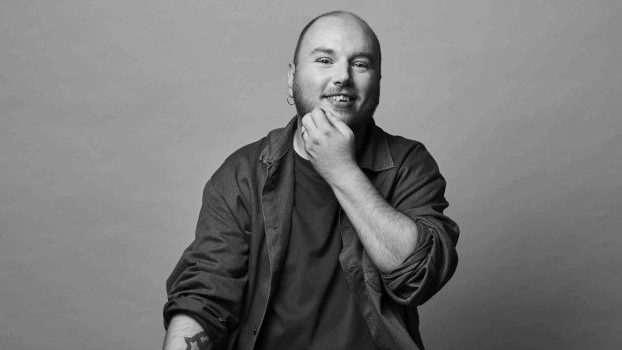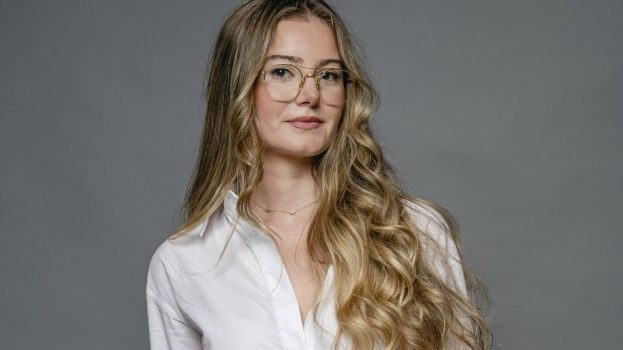This week, strategy is rolling out profiles of the 2020 Brands of the Year. Check back throughout the week to see the long-term plans and build-building strategies behind the rest of this year’s winners.
This story originally appeared in the Nov/Dec 2020 issue of strategy.
When SVP of marketing Sandra Sanderson completed a cross-country check-in with Sobeys banners in late 2018 – her first month on the job – she noticed every store was running the same creative. “Not only was the campaign the same across the banners, all other elements of the marketing for the holiday season were exactly the same – there was no differentiation.”
Hired by president and CEO Michael Medline in November that year, Sanderson was one of several new leaders tasked with helping Sobeys’ parent co. Empire Limited transform the country’s second-largest grocer from the bottom-up.
She immediately got to work creating clear and distinct brand strategies for every banner in the family, from Sobeys and Safeway to FreshCo and Thrifty Foods. The goal? To “sharpen the edges of our brands,” she says, “so that each one would stand for something unique in the market and enable the enterprise to differentiate at scale.”
Prior to Medline’s arrival from Canadian Tire in 2017, Sobeys’ marketing department didn’t play a leading role in the organization, according to Sanderson. With the goal of long-term growth, she says the CEO tasked the unit with “bringing the voice of the customer to the table, being a champion of the brand and a strategic business leader.”
New investment in marketing came even amid Empire’s broader cost-reduction plans. Over the last several years, the Nova Scotia-based company has undergone a massive restructuring aimed at simplifying its business and operations. Between 2017 and 2020, under a plan dubbed “Project Sunrise,” it successfully streamlined its way to $550 million in cost savings, in part by centralizing its operations.
With that heavy lifting behind it, the company unveiled “Project Horizon,” an ambitious three-year plan, in July 2020. Through this next phase of its transformation, Empire is looking to “win Canadian grocery ecommerce,” expand its footprint and private label portfolio and invest in data and analytics to deliver more personalized communications at scale. And with its new strategic mandate, the marketing team will play a central role across all of these initiatives.
 One of the most notable developments to come out of Sunrise was the development of a new ecommerce platform, Voilà by Sobeys. The grocer went bigger with its launch than planned to capture demand during the height of the pandemic. Through a partnership with British ecommerce company Ocado – whose technology has advanced ecommerce adoption in the U.K. and the U.S. – it began testing Voilà in April, later rolling it out GTA-wide in June.
One of the most notable developments to come out of Sunrise was the development of a new ecommerce platform, Voilà by Sobeys. The grocer went bigger with its launch than planned to capture demand during the height of the pandemic. Through a partnership with British ecommerce company Ocado – whose technology has advanced ecommerce adoption in the U.K. and the U.S. – it began testing Voilà in April, later rolling it out GTA-wide in June.
With the pandemic in full force, demand for grocery deliveries was at an all-time high. Some incumbent grocers, with more ecommerce experience than Sobeys under their belts, struggled to keep up with the overwhelming demand: deliveries took days or even weeks to fulfil and sometimes arrived without the correct items.
However, even as a latecomer to grocery delivery, Sobeys found success in a model that enabled it to circumvent many of COVID’s demand issues. With Voilà, groceries are delivered directly from a fulfilment centre equipped with Ocado technology that can process a 50-item order in less than five minutes. As demand peaked, groceries arrived within one-hour windows, often on the day the order was placed.
“There were certain elements of our value proposition that we knew would be important to our customers – fresh products, affordable prices, reliable and convenient deliveries,” says Sarah Joyce, SVP of ecommerce for Empire. “With COVID-19, a new consideration emerged around safety. We started highlighting for customers that we deliver from a robotic automated warehouse, not a store, meaning their order is packed safely and with less handling.”
Joyce, who led all aspects of Voilà’s development, including marketing and branding, says “Voilà” (a word that works as well in French as it does in English) was chosen to communicate the delight and “magic” with which groceries appear on customers’ doorsteps. “We needed the brand to pop and to grab your attention,” says Jacquelin Weatherbee, Sobeys’ VP of communications, adding that brightly coloured Voilà delivery trucks are like “beautiful billboards zipping around neighbourhoods throughout the GTA.”
The company is currently building the second of four planned fulfilment centres in Montreal that will serve Quebec and Ottawa customers starting in 2022. And it has rolled out a curbside pick-up option in the Atlantic provinces to expand its reach. Come the end of Project Horizon, the company expects to reach as much as 75% of Canadians and represent 90% of the potential ecomm spend pie.
 Outside of ecommerce, the company has made good on its promise to refresh its brands and expand its footprint. In 2018, it grew its portfolio with the acquisition of Farm Boy, the fast-growing Ottawa-based grocer known for its fresh food, farm-to-table produce and private label brand. The acquisition enabled Farm Boy to accelerate its expansion in Ontario, with plans to double its stores from 26 to 42 in five years.
Outside of ecommerce, the company has made good on its promise to refresh its brands and expand its footprint. In 2018, it grew its portfolio with the acquisition of Farm Boy, the fast-growing Ottawa-based grocer known for its fresh food, farm-to-table produce and private label brand. The acquisition enabled Farm Boy to accelerate its expansion in Ontario, with plans to double its stores from 26 to 42 in five years.
Meanwhile, the marketing department added new brand strategy and planning teams for each individual banner, as well as a new in-store marketing team, says Sanderson.
Through that process, the Sobeys banner was repositioned as “Canada’s family grocery store.” Safeway leaned further into its Western Canadian roots, and Foodland became the “friendly neighbour” communities could depend on, says Sanderson. But the most work was done on FreshCo, which she says was in need of a “bold rebranding and an expansion plan aimed at driving our discount business to the next level.”
The FreshCo banner’s previous black and white design had led shoppers to believe prices were as much as 10% higher than at competing stores. To help change perceptions, new decor and signage were rolled out across the banner’s Ontario stores and carried through its expansion into Western Canada, where it plans to open 10 to 15 stores in fiscal 2021; it currently has more than 100 locations across the country.
To support the rebrand, FreshCo worked with Toronto-based agency Juliet on a new brand platform, “We Let Our Prices Do The Talking,” which played up the banner’s low prices (see p. 41). The campaign successfully drove value perceptions of the brand: 77% of shoppers who saw the ads said they made FreshCo seem different from other stores, and the banner outpaced category sales growth by 72% during the campaign period.
[iframe_vimeo video = “480006794”]
Across the entire portfolio, the company has made sponsorship and CSR a priority – the group even folded its community investment arm into the marketing team – as it looks to foster a more emotional connection with customers across its banners, says Sanderson.
In early 2020, Sobeys became the first national grocery chain to eliminate all plastic bags from its 255 locations – an eco-friendly move that got a boost from a “Say Goodbye to Plastic Bags” campaign.
Last year, it implemented “sensory friendly” shopping hours across all of its banners to accommodate shoppers with sensory sensitivities – an initiative first suggested by a store manager in P.E.I. that serves as an example of the company’s commitment to “bottom-up innovation,” says Weatherbee.
More recently, Sobeys and the Sobeys Foundation launched a mass campaign to drive awareness of its “A Family of Support” initiative, through which it will raise and donate millions of dollars in support of mental health programs at 13 children’s hospitals and healthcare facilities. Sanderson previously said the investment represents “the broadest participation in a collective cause that we have ever had in our company’s history.”
With the pandemic heating up the grocery wars, the company’s ecommerce wins and bigger marketing focus couldn’t have come at a better time.
























